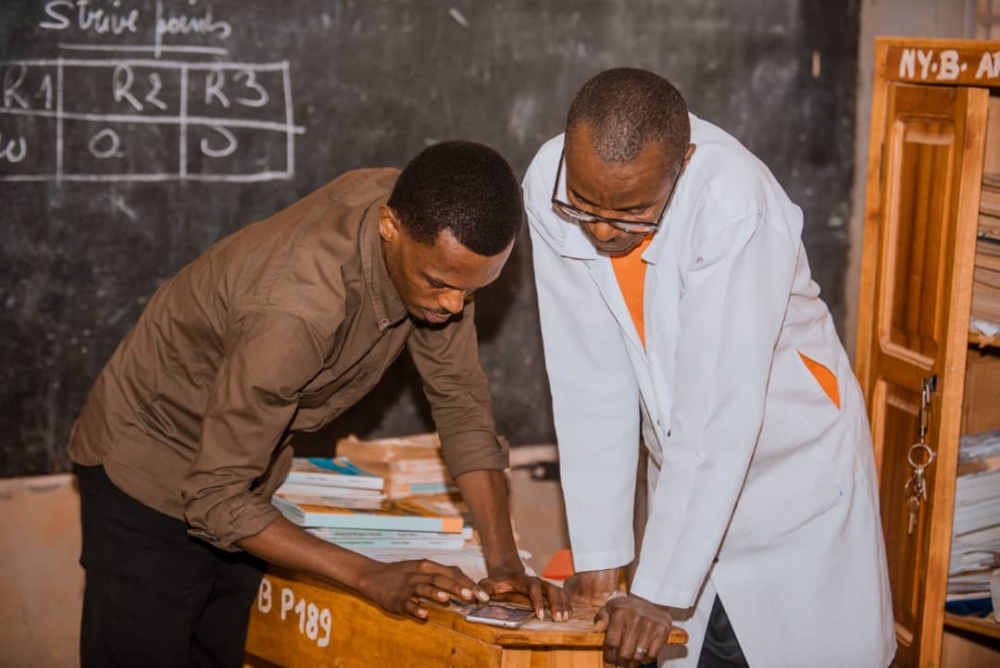

In 2017, Rwanda set a target to reduce the school dropout rate at primary and secondary school levels to nearly one per cent by 2024.
According to the government’s plan, this would be done by introducing education community workers at cell levels, improving the school data management system (SDMS) by introducing student identification numbers to track students’ evolution, and involving parents.
To aid the government’s efforts in curbing school dropout and delinquency, and help more children receive a full and comprehensive education, 32-year-old Cyusa Ian Berulo, launched his not-for-profit organisation, Berulo Foundation, in 2018.
ALSO READ: Quality education progress: 5 key issues raised by MPs
Part of the organisation’s work includes an initiative, ‘Murengere Atararenga’, that aims to protect and promote the upbringing, education, and safeguarding of children. Cyusa also introduced the Berulo mobile app this year, the first of its kind, which serves as a bridge between education leaders, local government, children, and their families.


"It has the potential to completely transform issues related to school dropouts and absenteeism, including fighting violation of children’s rights, and sustaining child welfare, as it links all the bodies required to track and solve a child’s issue,” he said.
How it works
Cyusa mentioned that the mobile app is accessible to all, even without internet connectivity. It can be used by individuals without smartphones who only receive mobile messages.
ALSO READ: Education: Minister calls for collective efforts to advance foundational learning
"The teacher has to register each member of their class and take a roll call every morning. If a student is absent, the teacher notes the reasons provided in a separate column, such as sickness or domestic activities. Various options are available for them to choose from,” he said.
"The teacher can ask neighbouring children, whom the app refers to as ‘abatangana’ (children from the same neighbourhood). If they know the reason one is absent, through this, they can track the child and follow up on them.”
After the teacher notes the reason, the village leader quickly realises over the phone that the child has missed school, and they can inquire with the child’s parents/guardians about the reason for the absence.
At the end of the week, the app ranks the most absent student and the most common reason for the absence, and the organisation can also see all the information and can intervene when needed.
Cyusa told The New Times that his goal is to make this technology reach many schools. It initially operated in areas of Western Province that include Nyamasheke, Karongi, Rutsiro, and Rubavu districts.
Jean Claude Nshutiyimana, the Director of Studies at Groupe Scolaire Murama in Rulindo District, said, "This really makes work easier than usual, because in under a minute, a teacher will be able to tell how many students are absent and the reasons behind, and me as a leader, I can easily access this information. By working hand-in-hand with the local authorities, we can do a follow-up and get to solve the student’s problem if it’s a big issue that needs intervention,” he said.
Nshutiyimana also said that the app created a good relationship among students as they follow up with each other and tend to know why a fellow student is absent.
"Also, it eased things financially because we used to buy the call register books all the time, which were not cheap, and every teacher needed to own one. It would also take a long time to analyse and get to know the students who spent the week without coming to school. But this app is very easy and financially friendly,” he said.
ALSO READ: Over 1,000 students to benefit from TVET scholarship programme expansion
Jeanne Damascene Hakuzimana, Executive Secretary of Mubuga cell, Kisaro Sector, in Rulindo District, in Northern Province, said the app makes it easy for them to track the student's performance in attendance.
"I work hand-in-hand with local leaders at the village level to know the reason why a student is absent, which is so different from the former methods, as the teachers would first make lists from their call registers that were sent to us to see the students’ attendance level,” he said.
"But now our phones notify us if the students are absent or present and it quickly reaches everyone engaged, the local leaders, guardians, and the district leaders.”
Cyusa, who also once dropped out of school due to financial constraints, designed the application not for sale but to help track and address student absenteeism, making it available free of charge.
"I wouldn’t have left school due to lack of funds, and then make an application that can prevent children from dropping out of school and sell it.”
Data from the 2020–2021 statistics yearbook issued by the Ministry of Education in February 2022, shows that the percentage of primary school dropouts grew from 7.8 per cent in 2019 to 9.5 per cent in 2020–2021.
The percentage of secondary school dropouts increased from 8.2 per cent in 2019 to 10.3 per cent in 2020/21, according to the same survey.


